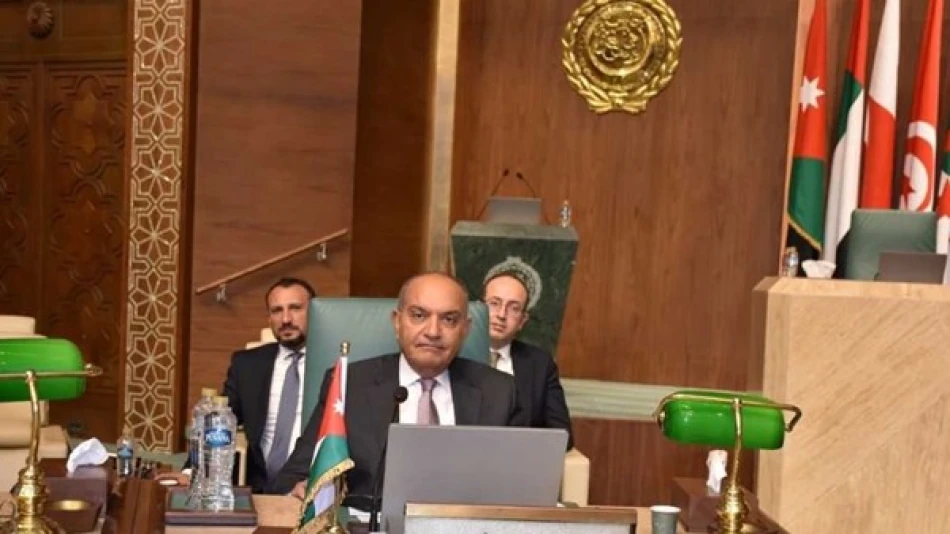
Jordan's Arab League Envoy Praises UAE's Historic Support for the Palestinian People
UAE-Jordan Partnership Delivers Massive Humanitarian Lifeline to Gaza Amid Regional Crisis
The United Arab Emirates and Jordan have forged an unprecedented humanitarian alliance to deliver critical aid to Palestinians in Gaza, with hundreds of aircraft and ships carrying medical supplies, food, and shelter materials reaching the besieged territory. This coordinated effort represents one of the most significant Arab-led humanitarian operations in recent years, demonstrating how regional powers are stepping up as traditional international aid mechanisms face mounting challenges.
Scale and Scope of the Relief Operation
Ambassador Amjad Al-Adaileh, Jordan's permanent representative to the Arab League and ambassador to Egypt, highlighted the remarkable scale of UAE's humanitarian commitment under President Sheikh Mohammed bin Zayed Al Nahyan's leadership. The operation includes the establishment of an Emirati field hospital in Gaza, daily convoys of dozens of trucks loaded with humanitarian supplies, and coordinated airdrops between the two nations.
The UAE-Jordan partnership has created what Al-Adaileh described as a "land bridge" through Jordanian territory, enabling a steady flow of aid that bypasses many of the logistical challenges that have hampered other relief efforts. This approach showcases how regional cooperation can deliver tangible results where broader international mechanisms often struggle with bureaucratic delays.
Strategic Implications for Regional Leadership
Filling the Humanitarian Gap
This initiative comes at a time when traditional aid delivery systems face unprecedented strain. The UAE's approach mirrors its successful humanitarian model used in Yemen and Syria, where it has established itself as a leading regional humanitarian power. By partnering with Jordan, which shares borders with the affected area, the UAE has created a more efficient delivery mechanism than relying solely on international organizations.
Economic and Diplomatic Dividends
For the UAE, this humanitarian leadership reinforces its position as a responsible regional power while potentially strengthening its relationships across the Arab world. Jordan benefits from enhanced cooperation with one of the region's wealthiest nations, potentially opening doors for broader economic partnerships. The collaboration also demonstrates how Gulf capital can be effectively deployed for regional stability—a model that could be replicated in other crisis zones.
Healthcare Infrastructure as a Diplomatic Tool
The establishment of field hospitals by both countries represents a sophisticated approach to humanitarian aid that goes beyond basic relief supplies. These medical facilities provide immediate healthcare services while also creating lasting infrastructure that can benefit communities long after the immediate crisis subsides. This strategy has proven effective in the UAE's previous humanitarian interventions, where temporary facilities often evolved into permanent healthcare assets.
Broader Context of Arab Regional Dynamics
Al-Adaileh's emphasis on "concrete actions and tangible assistance" as proof of Arab commitment reflects a broader shift in how regional powers approach humanitarian crises. Rather than relying primarily on diplomatic statements or international forums, countries like the UAE are increasingly using direct humanitarian action as a form of soft power diplomacy.
This approach contrasts with the more cautious strategies adopted by some other regional powers and suggests a growing confidence among Gulf states in taking independent action on regional issues. The success of this UAE-Jordan model could influence how future humanitarian crises are addressed across the Middle East, potentially reducing dependence on Western-led international organizations.
Sustainability and Long-term Impact
The commitment from both nations to maintain their humanitarian presence, including the operation of field hospitals and continued supply convoys, suggests this is not merely a short-term response but part of a longer-term regional strategy. For humanitarian organizations and international donors, this demonstrates how regional partnerships can provide both immediate relief and sustainable support systems that extend beyond traditional aid cycles.
Most Viewed News

 Layla Al Mansoori
Layla Al Mansoori






